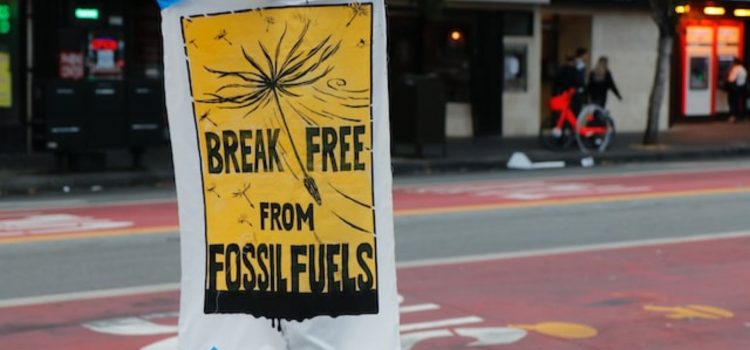

This article is an excerpt from the Shortform book guide to "How the World Really Works" by Vaclav Smil. Shortform has the world's best summaries and analyses of books you should be reading.
Like this article? Sign up for a free trial here.
How accurate are climate predictions? How likely are we to meet our global climate goals?
Vaclav Smil claims that it’s difficult, if not impossible, to make accurate predictions about global warming. That’s true even for those with extensive experience and knowledge on the topic. It’s also difficult, if not impossible, to meet current IPCC limits on warming.
Read more to learn why global climate goals are so difficult to reach.
The Challenge of Making Global Climate Predictions
Smil argues that it’s very difficult to make predictions about global warming because they rely on many layered assumptions (for example, technical, social, and economic assumptions), and world events are unpredictable. For example, Smil notes that 40 years ago no one could have predicted that the largest driver of climate change in the ensuing years would be the economic rise of China.
Those who predict environmental catastrophe and those who forecast instant, technological solutions are both likely to be wrong, warns Smil, in part because complex predictions are often wrong.
(Shortform note: Smil’s contention that complex predictions such as those concerning global warming are often wrong stands in contrast to his earlier point that global warming predictions made decades ago have proven to be remarkably accurate. In fact, studies show that most climate predictions released between 1970 and 2001 correctly predicted recent global surface temperatures. While there were a handful of models that didn’t accurately predict warming, this was only because they didn’t take into account people’s efforts to counteract global warming, such as regulations in the Montreal Protocol that resulted in a dramatic drop in planet-warming refrigerants.)
The Challenge of Reaching Global Climate Goals
Because of our heavy reliance on fossil fuels, Smil claims that it’s impossible to meet the IPCC goal of no more than 1.5°C of warming by 2030 and net zero carbon emissions by 2050. He points out that, by 2020, warming had already increased two-thirds of that amount. The IPCC estimates would require us to cut global energy demand by half between 2030 and 2050, but, in the last 30 years, global energy demand has risen by 20%.
Smil notes that the IPCC goals rely on factors such as less demand for consumer goods, but not only are we consuming more and more goods with every passing year, but the IPCC target also assumes that low-income countries won’t want to increase their share of material goods. Moreover, he says that, while carbon capture technology is an alternative to reducing emissions, this would require building a new transmission infrastructure to transport and store carbon, as well as dismantling the existing oil and gas infrastructure.
Smil points out that other than cutting down on the carbon involved in electricity generation, the world has been slow to end its reliance on fossil fuels. Even in a country like Germany that has worked to transition to renewable energy, fossil fuels still make up 78% of the primary energy supply; in Japan, that number is 90%. And even if the developed world significantly reduces its energy consumption, less developed countries actually need more energy to survive.
Smil concludes that there currently is no feasible way to end our dependence on fossil fuels quickly—it will have to be a gradual and expensive process.
| Progress Toward Global Climate Goals While many experts agree that there is no “magic wand” to end our dependence on fossil fuels overnight, some also note that our progress toward that goal is getting exponentially faster. Critics of Smil’s claims argue that he ignores the substantial progress that has already been made toward sustainability and reduced emissions—not to mention the increasing rate of that progress. They point out that in 2021, 38% of global electricity came from clean sources. Solar and wind power met 10% of the world’s electricity needs, but they accounted for 30% of the growth in demand for clean energy. And from 2021 to 2022, solar and wind power generation grew by 23% and 14%, respectively. Smil’s critics also contend that some of the statistics he relies on are misleading. For example, while it’s accurate that fossil fuels make up 78% of Germany’s primary energy supply, most primary energy generated by fossil fuels is wasted via heat dissipation; as a result, a more accurate measurement is final, useful energy. In 2022, renewable energy produced 46% of German power consumption. In addition, some experts note that investments in clean energy have skyrocketed in recent years. For example, from 2013 to 2019, US venture capital and corporate investment in climate technology grew at a rate five times faster than overall venture capital investment. Total US investment in renewable energy has grown rapidly from $32 billion in 2004 to $495 billion in 2022. |

———End of Preview———
Like what you just read? Read the rest of the world's best book summary and analysis of Vaclav Smil's "How the World Really Works" at Shortform.
Here's what you'll find in our full How the World Really Works summary:
- How modern-day life relies heavily on fossil fuels for nearly everything
- Why liberals and conservatives need to better understand how the world works
- Why it's nearly impossible to meet current IPCC limits on global warming






